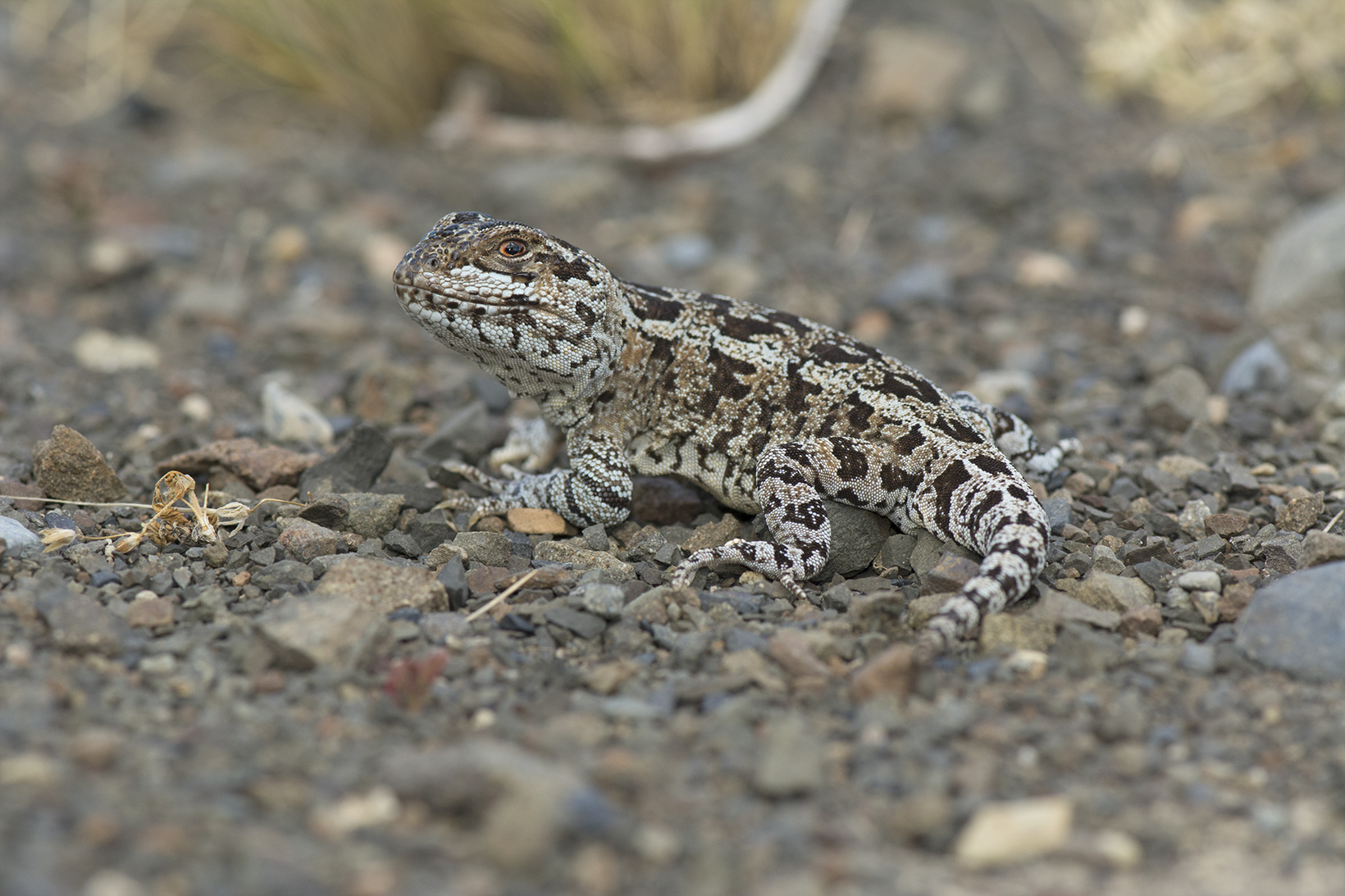The Last Lizard
The genus Diplolaemus or also called big-headed lizards are probably the least known group of reptiles that inhabit Chile. They are characterized by their large head compared to the rest of the body, and by their folds in the neck, from where their scientific name comes (from the Greek diplo "double" and laimos "neck"). It is native to the southern tip of Patagonia on both Chilean and Argentinean sites.
In the world, there are four species within the Diplolaemus genus, all exclusive to the southern cone of South America. Diplolaemus darwinii is the southernmost distributed and the least known of the three species that inhabit Chile. It is also known as Darwin's big-headed lizard, named after the prominent English naturalist and scientist Charles Darwin, who explored Patagonia in the early nineteenth century.
For years, it has been an enigma where exactly it would be possible to find this species in Chile. The few available antecedents came from ancient collections made by María Codoceo, a woman who, contrary to the normality of her time, in the mid-twentieth century, dedicated herself to herpetology and biological sciences. These collections were made in Última Esperanza province, but the specific location was uncertain for more than six decades.
In 2012, a tourist expedition of puma sighting managed to spot two specimens of Diplolaemus darwinii inside the property of Estancia Laguna Amarga. The photo was published on social networks on the Internet, being for many years the only known photographic record that herpetologists have for this species in Chilean territory.
Unfortunately, the person who spotted Darwin's lizard was not aware of the exceptional nature of the encounter and the locality was once again not recorded in detail, although this person, of French origin, recalled and gave some approximate clues about the sector of where he registered this species.
Based on these references, I made two expeditions to the presumed sectors around the Goic Lagoon, without obtaining good results in the search for the reptile, although in no case it was considered a waste of time, since I had notable encounters with some cougars among other majestic Patagonian species, at the same, I was narrowing down the space and the search habitats.
To find the species was not an easy mission, and to fail on an expedition is frustrating and may seem descouraging, but at the same time it is necessary to transform into a wildlife tracker; you have to learn to focus your energy, not get distracted, manage anxiety, have patience, optimize time by discarding the least likely sectors and thus, little by little, read the signs that allow you to find the species you are looking for.
Finally, in the third expedition in 2018, I managed to find a specimen that was almost under my feet. At first, I came to think that it was just dead because it did not move. I took some pictures of it and that is when very subtly it opened its eyes. Then I touched it with my finger, and again it opened its eyes a little, but at no time did it show an attempt to escape.
I was surprised to see an active reptile at such a low temperature in the middle of strong winds, well maybe just semi-active. Anyway, there it was, Darwin's elusive big-headed lizard! Imagine the excitement; it was the last species that I needed to know being alive among all the species of Saurian (lizards) that inhabit Chile. Although I never completed an album, I imagine that the one who got the last missing card must have felt a similar ecstasy. And as a magic art from then on, more and more specimens began to appear. I was impressed by how camouflaged and how slow its movements are compared to other species of lizards.
I have reviewed the herpetologist collections of Chile, and several of the species that are difficult to find I have seen in formalin or alcohol; but for me, it never compares with the emotion that gives me to see them in life. The vivid colors, the tonicity of the bodies, and, especially, the movement, make the sighting of fauna something amazing. For those of us who have experienced it, it is reasonable that there is a tourism industry that moves thousands of fans every year and that fortunately is increasing worldwide since this becomes a powerful argument when it comes to ensuring the conservation of species and ecosystems.
Finally, I can share some images that outline this enigmatic lizard and that return me to a state of happiness.
